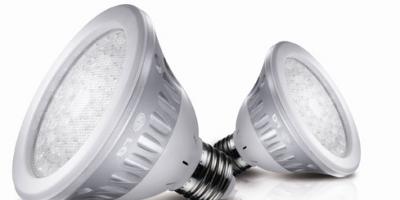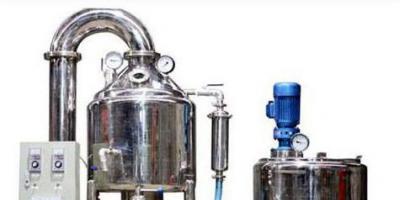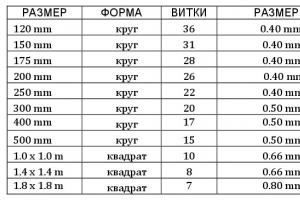Many women fear that pregnancy during mastopathy can worsen the condition and even lead to the formation of malignant tumors.
These fears are unfounded; pregnancy and childbirth will help stabilize hormonal levels, and subsequent breastfeeding promotes the resorption of fibroids and cysts, which leads to a complete recovery.
During premenopause and later, large single benign tumors (nodular forms, cystic or fibrous) more often occur.
Almost all women are at risk, but most often mastopathy affects adolescents in the menarche phase, women who have recently had an abortion, have miscarriages or are in premenopause.
The development of mastopathy can be influenced by breast trauma, taking hormonal medications, or dysfunction of the thyroid gland and ovaries. Often several factors influence the development of the disease.
Symptoms of mastopathy include:
- changes in breast tissue;
- constant or paroxysmal pain;
- feeling of heaviness and burning;
- nipple discharge;
- swelling and stretch marks on the skin;
- temperature increase;
- general depression, insomnia, irritability.
Pregnancy with breast mastopathy is quite possible and even more likely. Excess estrogen increases the likelihood of conception.
However, it can also provoke a miscarriage at an early stage, so from the first days of pregnancy it is necessary to register with a gynecologist and maintain constant contact with a mammologist.
 Patients over 35 years of age deserve special attention. Pregnancy often occurs in premenopausal women.
Patients over 35 years of age deserve special attention. Pregnancy often occurs in premenopausal women.
This condition requires constant medical monitoring and the use of hormonal medications throughout pregnancy.
Sometimes breast mastopathy and pregnancy can occur in women who abandon their usual oral contraceptives.
Long-term use of drugs suppresses the activity of estrogen; with the cancellation of the course, the amount of female hormones increases sharply, which provokes the appearance of benign tumors and breast edema.
Most often, this condition is short-lived; after a few months, symptoms may disappear on their own or after light maintenance therapy.
Contraindications
Mastopathy is not an obstacle to the normal development of pregnancy and successful childbirth. How does pregnancy affect mastopathy? Pregnancy will benefit the mother's body; hormonal changes usually do not affect the baby's condition.
To get rid of mastopathy during pregnancy, you need to follow all the doctor’s recommendations!
He can prescribe sedatives, and external remedies are prescribed to relieve pain symptoms.:
In order not to harm yourself and the unborn baby, you should absolutely not self-medicate. It is important to closely monitor your condition and report any changes to your doctor.
During pregnancy, some diagnostic procedures are prohibited, such as non-contact mammography or examination of the milk ducts.
Childbirth and breastfeeding: benefits in treatment and prevention
Does mastopathy go away after childbirth? Sometimes mammologists strongly recommend that patients give birth to a child in order to get rid of chronic fibrocystic mastopathy.
Does mastopathy go away during pregnancy? Early birth (from 18 to 25 years), the absence of interrupted pregnancies, breastfeeding - all these factors not only help get rid of already diagnosed mastopathy, but also serve as prevention against its occurrence.
 Breastfeeding is especially beneficial. Even if there is little milk and the baby has to be supplemented, breastfeeding should be maintained for at least several months.
Breastfeeding is especially beneficial. Even if there is little milk and the baby has to be supplemented, breastfeeding should be maintained for at least several months.
The constant outflow of fluid stimulates the gradual resorption of cysts and fibroids, relieves pain and reduces severity. During the feeding process, the hormonal levels are stabilized naturally, without taking medications.
Modern research proves that artificially increasing the quantity and fat content of milk does not give the desired results.
Condensed milk, tea with milk, walnuts, heavy cream and other folk recipes can lead to stomach upset or swelling. For normal lactation you need a balanced diet and a sufficient, but not excessive amount of fluid.
It is worth considering that artificially delaying breastfeeding can disrupt the hormonal balance and provoke a new round of mastopathy. Lactation for more than 12 months is not recommended; prolonged breastfeeding is a risk factor for both mastopathy and breast cancer.
Mastopathy during pregnancy symptoms:

As body weight increases and fluid retention increases, pain symptoms also increase.
To normalize the condition, you need:
- monitor your diet and drinking regime;
- Do not get carried away with carbonated drinks, coffee, canned food and pickles, which retain water in the body.
A balanced diet that excludes fried and fatty foods, fast food, and sweets will help you control your weight. Excess adipose tissue will not only worsen the condition of the expectant mother, but will also complicate childbirth.
There is also a danger for the baby; adding extra pounds during pregnancy is strictly not recommended.
The treatment regimen during pregnancy is developed by the attending physician. Women are often wary of hormonal drugs and have complete confidence in herbal therapy. However, many preparations are contraindicated for pregnant women; they can cause miscarriages, bleeding and other unpleasant consequences.
The list of prohibited herbs includes:
- belladonna;
- hop;
- celandine;
- mint;
- valerian.
Do not self-medicate; herbal medicines should be prescribed by a doctor.
For severe fibrocystic mastopathy, Utrozhestan can be prescribed in the form of tablets and vaginal suppositories containing natural prolactin. They gently correct hormonal levels without interfering with the normal course of pregnancy and effectively removing pain symptoms.
 External medications are actively used to relieve pain and heaviness. A proven and safe remedy is white cabbage.
External medications are actively used to relieve pain and heaviness. A proven and safe remedy is white cabbage.
A fresh leaf should be slightly crushed with your hands and applied to your chest for several hours or overnight.
Cabbage removes swelling, reduces heaviness and relieves fever. You can use fresh burdock or plantain leaves instead.
To improve the general condition, phytocreams, Root, are useful. They are applied 1-2 times a day when pain symptoms intensify.
Have a general strengthening effect:
- Vitamin teas: with hawthorn, rose hips, sea buckthorn.
- Freshly squeezed vegetable juices: cabbage, carrot, beet.
It is better to mix them in arbitrary proportions and dilute them with clean water.
Mastopathy in pregnant women is not a problem at all. Childbirth and breastfeeding will not only remove the symptoms of the disease, but will also help avoid the appearance of malignant neoplasms. It is important to monitor your condition and do all medical procedures only with the permission of the attending physician.
You can find additional information on this topic in the section.
Fibrocystic mastopathy and pregnancy are not interrelated. The disease can also occur in non-pregnant women. More often, mastopathy develops after 35-40 years.
The following factors contribute to this:
- Unfavorable environmental situation.
- Unhealthy lifestyle and poor nutrition.
- Hormonal imbalances.
- Genetic predisposition.
Mastopathy during pregnancy is quite common, but there is no need to worry. You can give birth safely, since during the period of bearing a child, the body produces hormones that help cure the disease. In half of the cases, after the birth of a child or breastfeeding, all signs of mastopathy disappear.
Symptoms of the disease
Most women under 40 find out that they have mastopathy even before pregnancy. In some cases, the diagnosis can be made while the child is pregnant. In some cases, the pathology goes unnoticed.
But gradually the following symptoms begin to appear:
- The mammary glands swell and become engorged.
- Constant or occasional chest pain.
- Small lumps can be felt in the tissues of the gland.

The gynecologist with whom the woman is registered must constantly monitor the condition of the patient’s breasts, so symptoms of mastopathy during pregnancy can be detected in the early stages of the development of the disease.
To confirm the diagnosis, special studies are carried out. Usually, women over 40 are prescribed mammography, but since the procedure is carried out using ionizing radiation, so as not to harm the child, ultrasound is prescribed.
The effect of pregnancy on mastopathy
The disease most often develops in women who have not given birth to a child before the age of 40. That is why experts say that pregnancy and prolonged breastfeeding are excellent prevention of not only fibrocystic disease, but also breast cancer.
For women who already suffer from mastopathy, the question arises whether it is possible to become pregnant before the disease is completely cured.
Experts say that mastopathy and conception do not interfere with each other. During pregnancy, there is even a chance that the disease will go away on its own.

This happens because at the beginning of pregnancy, the ovaries, and in the middle, the placenta begins to actively produce progesterone. This hormone reduces the effect of estrogen on the mammary glands and stops the process of tissue proliferation. Therefore, during pregnancy it is possible to completely cure diffuse mastopathy and reduce the manifestations of nodular mastopathy.
Is mastopathy that occurs during pregnancy treated?
If you are diagnosed with mastopathy while carrying a child, you can hope for a speedy recovery. Very often, after the birth of a baby and prolonged breastfeeding, the disease goes away even without treatment. This occurs under the influence of natural processes in the mammary glands.
Pregnancy can have a good effect on the body with diffuse mastopathy, but with its other forms treatment may be necessary.

Fibrocystic mastopathy during pregnancy can also go away without appropriate therapy. This form of the disease is characterized not only by the proliferation of fibrous tissue, but also by the formation of cavities filled with fluid, which are called cysts.
Carrying a child affects fibrous tissue in such a way that neoplasms resolve, but cysts may remain. Then treatment may be needed.
True, it may be that during lactation lasting more than six months, the cysts will decrease or disappear, but this does not always happen.
Therapy is selected individually for each woman. If the mastopathy is not diffuse, then taking into account the state of hormonal levels and concomitant diseases, a course of treatment is chosen. This is very difficult, since many drugs are contraindicated for pregnant women.
Treatment of the disease in this case is aimed at:
- Stopping the inflammatory process.
- Reducing the number of neoplasms.
- Establishing hormonal balance.
- Reduced painful symptoms.
- Normalization of the functions of the liver, kidneys and central nervous system.

Success in treatment largely depends on the behavior of the woman herself. Ladies over 40 especially need to take care of themselves.
The patient herself can bring recovery closer if she:
- Eat right and give up bad habits.
- Engage in light physical exercise.
- Rest and sleep at least eight hours a day.
- Avoid stress.
- Walk outdoors more often.
- Avoid direct sunlight on the mammary glands.
Mastopathy during pregnancy is not a reason not to give birth to a child. On the contrary, this process may have a better effect on the course of the disease than traditional treatment. But this does not mean that the symptoms of the disease should be ignored. You must consult a doctor immediately.
Pregnancy is the most long-awaited and desired period in the life of every woman. After all, Mother Nature has endowed the woman with the ability to give new life and continue the family line.
Almost everyone faces this problem during pregnancy.There is an opinion among people that pregnancy and mastopathy are quite compatible concepts, because it is pregnancy that helps to heal some gynecological diseases, such as mastopathy, hormonal disorders and menstrual irregularities. But before you start such treatment, you need to consult with an experienced doctor, undergo the necessary research and only then plan a pregnancy.
Fibrocystic mastopathy: causes, symptoms, diagnosis
Mastopathy is a benign neoplasm, which is characterized by the replacement of glandular breast tissue with connective tissue. There are such types of diseases as:
- diffuse mastopathy;
- nodular (cystic) mastopathy;
- fibrocystic mastopathy (FCM).
Diffuse mastopathy is characterized by multiple formation of lumps throughout the breast, while with nodular mastopathy, only single breast neoplasms in the form of cysts can be detected. Fibrocystic mastopathy is characterized by multiple formation of cysts, papillomas and fibroadenomas throughout the breast tissue.
The main cause of a disease such as fibrocystic mastopathy is a hormonal imbalance in the female body. Contributing factors for the development of this disease are:
- frequent hypothermia;
- stress;
- weakened immune system;
- frequent gynecological diseases;
- irregular sex life;
- abortions;
- bad habits;
- concomitant diseases (diabetes mellitus, obesity, thyroid disease).
The first symptoms of mastopathy are the presence of nodules and lumps in the chest upon palpation, bursting pain, which intensifies in the premenstrual period and radiates to the arm or shoulder blade. To diagnose a disease such as fibrocystic mastopathy, you need to consult a mammologist or gynecologist for a consultation. An experienced doctor will conduct examination, palpation, mammography, and additional laboratory research methods if necessary.
According to statistics, 90% of all women are susceptible to fibrocystic mastopathy, and the age of the disease has become significantly younger. To avoid health problems and prevent the disease from becoming malignant, it is necessary to conduct a monthly preventive examination yourself, and if necessary, seek help from a doctor.
Compatibility of pregnancy and mastopathy
Most women, before conceiving a child, undergo a thorough examination by all specialists, so as not to put the life and health of the baby at risk. But as practice shows, mastopathy does not interfere with a healthy pregnancy. Moreover, very often pregnancy helps maintain breast health and get rid of mastopathy.
The reason for this healing effect is the hormone progesterone released in large quantities during pregnancy. It is thanks to him that the normal functioning of all endocrine glands is restored in a woman’s body, and hormonal levels are adjusted. In many cases, pregnancy is a universal treatment for a disease such as fibrocystic mastopathy.
To prevent and treat mastopathy, mammologists recommend maintaining lactation for as long as possible and feeding the baby with breast milk. In most cases, at the initial stage of the disease, the nodules resolve and disappear.
Fibrocystic mastopathy: treatment
Pregnancy and long-term lactation are the best treatment and prevention of mastopathy, but not in all cases they guarantee 100% relief from the disease. Therefore, depending on the stage and severity of the disease, the doctor can recommend the necessary effective treatment:
- conservative treatment (medicines, physiotherapy);
- surgical treatment (surgical intervention).
Drug treatment of mastopathy is based on the use of two types of drugs:
- hormonal (drugs containing progestin hormones, contraceptives);
- non-hormonal (vitamins, homeopathic medicines, enzymes, herbal medicine).
 Select the necessary medications for treatment together with your doctor
Select the necessary medications for treatment together with your doctor 1. “Mastodinon” is a homeopathic drug that helps normalize the functioning of the hormonal system, eliminates menstrual irregularities, relieves swelling and pain in the chest.
2. “Mamoklam” is a drug that helps normalize all processes in the breast, alleviates symptoms, and prevents the development of breast cancer.
3. “Civilin” is an anti-inflammatory drug that provides effective treatment and resorption of compactions and nodules.
These drugs have undergone thorough clinical testing, as a result of which it has been proven that the effectiveness of complex treatment of mastopathy with these drugs increases several times. It is also worth noting that some drugs are approved for use during pregnancy and lactation.
If drug treatment is ineffective, the doctor may recommend surgery. There is no need to be afraid of such a prognosis, because today medicine is developing by leaps and bounds and there are many minimally invasive techniques that allow you to perform an operation quickly and efficiently with minimal tissue trauma.
Fibrocystic mastopathy: self-examination and prevention
Fibrocystic mastopathy, like other diseases, is easier to prevent than to undergo long-term treatment. The most reliable and reliable method for early diagnosis of fibrocystic mastopathy is a thorough monthly breast self-examination.
To do this, every month after menstruation, you need to conduct a visual examination of the breast near the mirror while standing, paying attention to the symmetry of the mammary glands, nipple retraction, the condition of the breast skin and the halo. The next step is palpation of the mammary gland, in a lying position, with palpation of nearby lymph nodes. Palpation is carried out from top to bottom vertically, from the inside to the armpit. If you notice any warning symptoms, you should immediately consult a doctor for advice.
To prevent fibrocystic mastopathy from sneaking up on you unnoticed, you should follow a few simple rules:
- healthy balanced diet,
- proper rest and sleep at least 8 hours a day,
- physical education,
- hardening,
- avoiding direct sunlight on the exposed skin of the chest,
- planning pregnancy and avoiding abortion,
Take care of your health - and you will be fine!
Mastopathy is a pathology of the mammary gland that can occur in women of any age due to hormonal imbalances in the body. This disease often occurs in pregnant women, either when it first developed during pregnancy or when it was diagnosed earlier. In both cases, timely diagnosis and adequate therapy taking into account the woman’s condition are required.
Mastopathy is not a disease that threatens pregnancy, but its timely treatment will help avoid unpleasant moments
Manifestations and course of mastopathy during pregnancy
Pregnancy and mastopathy are often combined. However, the course of the pathology varies and depends on many factors.
- If mastopathy develops during the first pregnancy in a woman who has not yet turned thirty years old, without concomitant pathologies and with minimal changes in hormone levels, in 90% of cases the course of the disease will be mild and will not affect the woman’s situation in any way.
- With the long-term development of pathology that developed before pregnancy, as well as with the onset of pregnancy in women after 30–35 years of age, a moderate course of the disease is possible.
- Concomitant pathology, pronounced changes in hormonal levels, regardless of age, can cause severe mastopathy.

Pathologies of other hormone-producing organs, for example, the thyroid and parathyroid glands, can complicate the course of mastopathy.
Regardless of age, time of onset of the disease and the course of the pathology, there are common symptoms that help recognize mastopathy.
- A feeling of heaviness in the chest that remains throughout pregnancy.
- A compaction in one or both glands, which the woman herself can feel upon palpation.
- A possible symptom that does not occur in all women is nipple discharge.
- During pregnancy, the presence of pain is characteristic, especially pronounced in the first trimester.
Increased body temperature, increased fatigue, and excessive drowsiness may be symptoms of an infectious pathology.

Chest pain, fever, lactostasis (during breastfeeding) indicate the development of mastitis
Is it possible to get pregnant with mastopathy?
Mastopathy develops when the natural hormonal levels of a woman’s body are disrupted. It is the normal ratio between estrogen and progesterone that contributes to the onset of ovulation, normal fertilization, as well as the movement of the fertilized egg through the fallopian tubes and its attachment to the wall of the uterus.
Changes that occur in the ratio of these two hormones significantly reduce the chance of getting pregnant. However, the presence of mastopathy does not exclude pregnancy. In the question of whether it is possible to get pregnant with mastopathy, other factors also play a role. Among them:
- woman’s age (the chances decrease, but do not disappear after 35 years);

Changes in hormonal levels along with a woman’s age significantly reduce the chances of getting pregnant
- stage of the pathological process;
- presence or absence of complications;
- hormone levels and their activity;
- neuropsychic state of a woman.
A slight increase in estrogen may not affect a woman’s ability to become pregnant and give birth at all. However, doctors recommend that all women plan a pregnancy and undergo a medical examination first. It will show a woman’s chances of developing a pregnancy and help predict its course.
How does pregnancy affect mastopathy?
Mastopathy is a pathology of the mammary gland that develops under the influence of disrupted hormonal levels in the body. For the development of mastopathy, a prerequisite is a decrease in progesterone levels and an increase in estrogen levels.

Violation of the necessary balance between hormones provokes the development of mastopathy
In this case, a decrease in progesterone levels or an increase in estrogen levels is conditional. The most important is the change in the ratio between these hormones in the body. If estrogen levels increase, progesterone levels may remain the same, but the ratio between the hormones still changes.
Hormonal imbalance in mastopathy is a pathological process. However, pregnancy itself involves changes in hormone levels.
If a woman does not have concomitant pathology from the internal secretion organs (thyroid gland, adrenal glands, thymus, hypothalamus, pituitary gland), an uncomplicated course of mastopathy during pregnancy is possible.

The most dangerous complication of mastopathy is its malignancy
If the level of estrogen does not change during pregnancy, and progesterone decreases, it is possible that the course of mastopathy in pregnant women will worsen. In this case, one should be wary of the development of complications of the pathological process (attachment of a purulent inflammatory process) and malignant degeneration of glandular tissue.
It is impossible to predict how mastopathy and pregnancy will interact in each individual woman. This largely depends on the following factors:
- woman's age;
- the number of previous pregnancies and births, as well as their course;

The course of mastopathy during pregnancy is greatly influenced by the patient’s obstetric history.
- time of development of mastopathy (before or after pregnancy);
- initial hormonal background;
- concomitant pathological conditions;
- past diseases;
- family history;
- characteristics of the region of residence.
The combination of fibrocystic mastopathy and pregnancy requires more careful attention from a gynecologist in comparison with an uncomplicated pregnancy. For any form of mastopathy, a pregnant woman is advised to consult a mammologist.

A conversation with a doctor and the necessary diagnostic tests will help you avoid dangerous complications.
Impact of illness on childbirth
Mastopathy has absolutely no effect on the course of labor. The only nuance is the presence or absence of purulent complications. If fibrocystic mastopathy during pregnancy is complicated by an inflammatory process with purulent effusion, it is absolutely forbidden to put the baby to the mother’s breast after childbirth.
In this case, it is necessary to immediately, after giving birth, give the child adapted milk formulas. It is possible to transfer the baby to natural feeding only after the purulent process has been eliminated with the permission of the obstetrician and pediatrician.
Postpartum changes in the body
The giving birth body is characterized by a completely different hormonal background than during pregnancy.

Secretion of prolactin allows breastfeeding
If during pregnancy the ratio of estrogens and progesterones was most significant, then after childbirth a woman’s action of the hormone prolactin comes to the fore. It is thanks to him that milk is produced in the body.
Mastopathy is not an obstacle to normal lactation.
However, breastfeeding can significantly affect the course of the pathology. Almost half of women after childbirth experience lactation mastitis, which is associated with stagnation of breast milk in the glands, which leads to the development of an inflammatory process of the mammary glands. This condition is quite easily corrected - you need to constantly express milk and massage the breasts. However, with mastopathy, milk stagnation can become a serious complication.

Lactostasis – stagnation of breast milk in the ducts of the gland
Breastfeeding women may experience lactation mastitis with existing mastopathy of the mammary glands. The anatomical structure of the gland is already pathologically changed, so stagnation of milk in the ducts quickly leads to infection. This is fraught with the development of purulent mastitis. If a woman does not notice the symptoms of inflammation in a timely manner, then purulent masses will be released from the gland along with milk, which can enter the body of the newborn baby.
Therefore, it is extremely important to identify pathology during pregnancy (and even better during planning) and undergo a course of treatment. If it was not possible to get rid of mastopathy before birth, you can feed your baby breast milk only with the permission of an obstetrician-gynecologist or pediatrician. During lactation, it is necessary to constantly express milk and undergo examination to prevent possible complications of the pathology. With a normal period of breastfeeding, lactation has a positive effect on the course of the disease.

Breastfeeding is not contraindicated for mastopathy
Most doctors agree that breastfeeding helps to get rid of the symptoms of mastopathy.
Treatment of pathology
Treatment of mastopathy during pregnancy begins with a visit to a mammologist. It is mandatory to conduct an ultrasound diagnosis of the mammary glands. In this case, the form of the disease (nodular or diffuse) and localization are determined. Performing several studies throughout the entire period of pregnancy allows you to dynamically monitor the activity of the process and the rate of development of the pathology.
A necessary study is to determine the level of estrogen and progesterone in the blood. This diagnostic procedure must be repeated at least three times - in each trimester of pregnancy, which will help to monitor not only the course of the disease, but also to predict its activity and impact on pregnancy.

Pregnant women with mastopathy need to periodically monitor the body's hormonal levels
The most favorable for treatment is nodular mastopathy. If there is a high risk of complications in this case, initial correction with hormonal drugs is recommended. If drug treatment is ineffective, a surgical operation is indicated in which part or all of the gland is removed completely, followed by plastic surgery.
Not one year. The most effective is the restoration of adequate hormonal levels. In this case, the initial levels of estrogen and progesterone are determined and correction with hormonal drugs is prescribed. If malignant degeneration is suspected, a mastectomy is performed - removal of the mammary gland with the possibility of subsequent plastic surgery.
Uncomplicated mastopathy of any form with low process activity requires dynamic monitoring and may not be corrected during pregnancy. In all other cases, drug or surgical treatment may be necessary.

Treatment of mastopathy begins with medications, if ineffective, surgical intervention is used.
Lack of treatment during mastopathy during pregnancy may slightly complicate its course or have no effect at all. However, with high activity of the process or the presence of complications, lack of treatment can lead to the development of severe pathology for the health of the mother and the intrauterine development of the child. It is optimal to plan pregnancy and treat mastopathy before it occurs.
If such a situation is impossible, the treatment method is selected individually for each woman by a council of doctors from an obstetrician-gynecologist, mammologist and surgeon.
The video talks about preventing mastitis during breastfeeding:
Mastopathy is a pathological growth and change in breast tissue. Connective and epithelial tissue grow unevenly, hence the lumps, sometimes painful, sometimes not. Is it possible to get pregnant with mastopathy and give birth, carry a healthy child and successfully breastfeed? Let's look at it in more detail below.
Forms of the disease
There are more than five forms of FCD. The most common are fibrocystic, fibrocystic (mixed) and diffuse (initial). Diffuse is the mildest (initial stage), which is what most women experience after pregnancy and breastfeeding. There is a risk of progression to a more severe form if a woman does not give birth, does not breastfeed, or does not take medications. When cysts predominate, they speak of fibrocystic mastopathy; in fibrosis with the presence of small cysts, they speak of fibrocystic mastopathy.
Oncologist's opinion: diffuse mastopathy can be considered as a natural change in breast tissue, which for one reason or another does not fulfill its natural function - milk production.
Mammology is a fairly new branch of medicine dedicated to the diagnosis, treatment and prevention of the mammary glands (previously gynecologists dealt with breast problems). Mastopathy is one of the most widespread diseases of the mammary glands; it became widespread in the 20th century, when women began to give birth little and prefer artificial feeding.
Why is it even necessary to distinguish one form from another to answer the question about the effect of the disease on pregnancy? The fact is that to clearly define the essence of your own disease is to give the correct answers to a number of questions that arise, such as: is it possible to give birth to a child, is it possible to become pregnant with mastopathy, and how will lactation affect the condition of unhealthy breasts?
Is conception possible with pathology?
 When it is impossible to get pregnant, the desire to give birth is painful and many women begin to look for a reason where there is none. The question of whether it is possible to get pregnant with mastopathy is not entirely correct. The mammary glands, as well as the female reproductive organs, have hormonal regulation.
When it is impossible to get pregnant, the desire to give birth is painful and many women begin to look for a reason where there is none. The question of whether it is possible to get pregnant with mastopathy is not entirely correct. The mammary glands, as well as the female reproductive organs, have hormonal regulation.
The direct cause of the disease is hormonal imbalance. The disease itself cannot be the cause of infertility, but it can be caused by the same disorder as the immediate disease that makes it difficult to get pregnant.
For example, it may be accompanied by:
- Polycystic ovary syndrome is not a guarantee of infertility; many women successfully become pregnant with this disease, but it can significantly complicate conception (a sign of a “difficult option” is irregular periods).
- Endometrial hyperplasia requires serious treatment; the opportunity to become pregnant appears only after eliminating the causes that caused the hyperplasia.
- Inflammation of the appendages - according to statistics, every fifth woman who has suffered from this disease is infertile.
- Myoma itself rarely interferes with conception; the root causes of infertility with fibroids are ovulation dysfunction, compression of the fallopian tubes, but removal of fibroids increases the likelihood of conception.
- Endometriosis makes it difficult to get pregnant.
- Thyroid dysfunction - in addition to many negative consequences, such as miscarriages, premature births, also affects conception.
If there is a suspicion that mastopathy accompanies a hidden disease, and conception does not occur for this reason, you should be checked for gynecological and endocrinological diseases.
Pregnancy and mastopathy
 Among dozens of reasons that can provoke breast pathology, the absence of pregnancy is also mentioned. Why do women who have given birth get sick less often? Let's look at how hormones work:
Among dozens of reasons that can provoke breast pathology, the absence of pregnancy is also mentioned. Why do women who have given birth get sick less often? Let's look at how hormones work:
- The first phase of the menstrual cycle - under the influence of estrogen, breast cells grow. This is how the body prepares for pregnancy.
- The second phase – this process is inhibited by the hormone progesterone. It stops cell growth.
- Days of menstruation - excess cells atrophy, the breast returns to its original state.
As you can see, the process is similar to the growth of the endometrium in the uterus. The same cycle: preparation for a possible pregnancy - absence of pregnancy - cell death.
If the two hormones that regulate this process, estrogen and progesterone, are out of balance, the tissues grow excessively.
What is the effect of pregnancy on mastopathy? If in the third stage pregnancy occurs instead of menstruation, progesterone, which stops cell growth, continues to be produced.
Now it will be like this throughout my pregnancy. Eighty percent of pregnant women note that the chest pain that bothered them has disappeared or decreased.
Does breastfeeding cure
 This is true. Mammologists recommend feeding for at least six months. Preferably up to two years. If the disease was present before pregnancy, it is recommended to breastfeed the child until 3 years of age - this will allow you to be cured without going to a surgeon or pharmacies.
This is true. Mammologists recommend feeding for at least six months. Preferably up to two years. If the disease was present before pregnancy, it is recommended to breastfeed the child until 3 years of age - this will allow you to be cured without going to a surgeon or pharmacies.
If lactation is completed before the newborn is 3 months old, the risk of developing the disease if there is a predisposition to it increases significantly.
However, lactation should not be perceived as a panacea. Breastfeeding, if long-term and correct (without stagnation of milk), can undoubtedly help breast health, but if this health was lost due to changes in hormonal status, gynecological diseases or endocrine disorders, mastopathy will return.
In addition, breastfeeding can even worsen the condition, causing mastitis. The fact is that in many forms of the disease (with a predominance of tissue fibrosis, in the fibrocystic form), the ducts narrow, this complicates the outflow of milk and increases the risk of lactostasis. That is, a woman who decides to cure mastopathy by breastfeeding will require special patience and attention, and, of course, the supervision of a specialist.
No specific treatment for pathology during pregnancy is required; it is enough to visit a mammologist on time and follow general requirements, such as wearing comfortable underwear.
Treatment or pregnancy?
 Is it possible to get pregnant with mastopathy or is it better to cure the disease first?
Is it possible to get pregnant with mastopathy or is it better to cure the disease first?
The second option is preferable, that is, to carry out treatment and then plan a child. However, mastopathy cannot be a direct contraindication to pregnancy and childbirth.
On the contrary, pregnancy and further breastfeeding are a significant contribution to solving the problem, especially if we are talking about a diffuse form.
According to various sources, from 50 to 80% of patients are completely cured after childbirth and breastfeeding. Whether a particular woman can be one of these lucky women can only be said if you know:
- The form of the disease (fibrous mastopathy is less pliable than diffuse mastopathy, etc.).
- State of the reproductive system.
- State of hormonal balance.
It is these three points that are necessarily clarified during an examination by a mammologist. So, only an observing doctor can give a more or less accurate answer to the question: to treat the disease and then get pregnant, or vice versa.
conclusions
- Does mastopathy affect conception? - No.
- The cause of problems with pregnancy with mastopathy may be other diseases: gynecological and endocrinological.
- Mastopathy during pregnancy does not require treatment with drugs; on the contrary, pregnancy can eliminate the symptoms.
- Long-term breastfeeding promotes breast health, but does not guarantee recovery.
- It is important to know the causes of the disease and correctly recognize its form.
The video talks about whether mastopathy can be treated during pregnancy.
It is important to know! In women who have not given birth under 25-30 years of age, fibrocystic disease (mastopathy) does not cause much concern, but closer to 30, especially during pregnancy and after childbirth, 80 percent of women develop a complication of mastopathy. Along with women who have not given birth, many mothers who devote almost all their time to their baby forget about their health or think that this problem is trivial and will go away on its own. Expectant mothers are in an even more difficult position - during pregnancy and breastfeeding, many pharmaceutical drugs are prohibited. Did you know that mastopathy, if not treated in time by preventing the disease, can cause breast cancer. Read about a completely natural remedy for mastopathy (fibrocystic disease), compatible with breastfeeding and pregnancy here...








